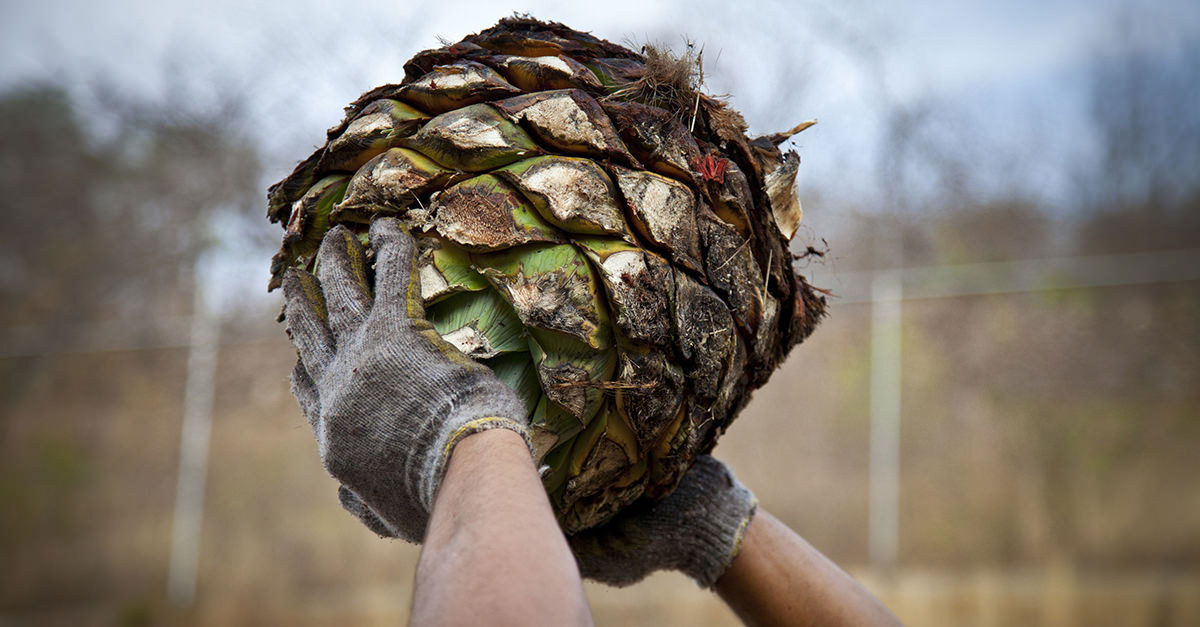Tequila Essential Info
- Color: Clear, light gold, rich amber
- Region: The majority are made in the Jalisco state of Mexico (technically it can also be made in Guanajuato, Michoacán, Nayarit, and Tamaulipas)
- ABV: Typically 40% ABV
- Aged: Blanco/Joven 0-2 months; Reposado 2 months-1 year; Anejo 1-3 years; Extra Anejo at least 3 years
- Made from: Blue Weber Agave
- Commercial Examples: 1800 Tequila, Patron, Gran Centenario, El Tesoro, Partida, Chinaco
- Popular Cocktails: Paloma, Margarita, Tequila Sunrise, El Diablo, Bloody Maria
It’s a shame tequila is associated with tequila cruda (that salt, lime, shot, oblivion thing). Not that shots don’t have their place, but whatever tequila you’re shooting—even if it’s a blanco—it actually took a minimum of eight years to get to the glass. Time and respect should be paid.
Produced primarily in Jalisco, tequila is the opportunistic product of the life cycle of the blue weber agave plant, a succulent (but not a cactus!) that defies desert temps to mature into a giant, spiky beast after eight years. (Seriously, the plant makes it look like the desert rebelled and got a terrifying punk haircut.) Unlike a grapevine, agave are one-time use plants: the massive heart, or pina, is cut out and processed to make tequila (or Mezcal), with much of the work being hands-on from start to finish. Because tequila can be fermented with either commercial or wild yeast (from the surface of the agave or surrounding environment), flavor profiles can express more or less subtle variation. Whether it’s a highland (brighter, greener) or lowland (fruitier, earthier) will also impact the flavor profile, but stuff like that’s not always written on the label, so research helps.
After the pinas are cut out of the blue weber agave, they’re basically steam-cooked to prepare the starches in the pina for fermentation. And while tequila, like vodka and gin, is a clear spirit, it is actually pot-distilled—meaning more congeners can remain to flavor the spirit, depending on the desires of the distiller. (Tequila is generally distilled at least twice.) Once it’s been distilled to strength, tequila’s either bottled (for a blanco/joven) or aged for a period of time in any variety of wooden barrel or cask (there are no strict rules here). Younger tequilas will have more of that green, earthy heat while aged tequilas will be mellower and increasingly rich and complex as age time increases. Beware of “mixto,” which is tequila made with only 51% agave, and the remainder made from a neutral spirit made from cane sugar. Alas, there’s plenty of mixto out there, which is fine if you’re buckled in for a rough night or looking to mix for some less-than-craft-quality Margaritas. But 100% agave tequilas will reward with a ton more complexity.
* There are actually a limited number of distilleries in Jalisco, so many tequila producers might actually share the same distilling space from season to season.
- Silver/Blanco/Joven: generally unaged (or very briefly aged, for smoothness, e.g. “Suave” styles); full of agave flavor, but also heat, and an impression—but not taste—of vegetal sweetness
- Gold: Basically a hybrid type, usually a mixto with coloring added to make it seem aged when it’s not; best bet is buying a brand that actually states “100% agave” on the label
- Reposado: Meaning “rested,” aged in wood barrels for 2 months to under a year
- Anejo: Aged between 1 and 3 years, the widest available complexly aged tequila, with softened heat and good wood character; too much aging isn’t recommended, as tequila is about expression of vegetal agave
- Extra Anejo: A newer category, aged over 3 years, not as many examples but worth looking into if you like wood characteristics
